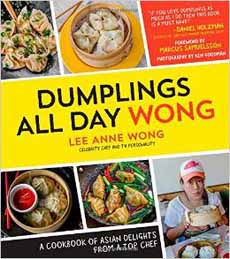TIP OF THE DAY: Potstickers For Chinese New Year
|
The Chinese New Year holiday begins today. It’s also called Lunar New Year, since the date is based on the lunar calendar*; and other Asian countries in addition to China celebrate it. The celebration lasts for 15 days, and an estimated 1.4 billion people around the world participate. It’s the Year Of The Dog, one of the 12-year cycle of animals which appear in the Chinese zodiac. The characteristics of the animal are believed to influence everything that happens during the ensuing 12 months. Yet, while people universally love dogs, the zodiac isn’t as kind to them. Advice for the Year Of The Dog: The dog’s vulnerability is procrastinate too long and miss that opportunity so be sharp-eyed this year in order to maximise on his own potential. Here’s [horoscope guidance] for your sign in the Year Of The Dog. Here’s more about it, plus the traditional good-luck foods for Chinese New Year (potstickers are one of them). Now, how about some Chinese fare to celebrate? To us, potstickers, a traditional Chinese dumpling, are always a treat. They can be enjoyed fried (photo #2) or steamed/boiled (photos #1 and #3) with a dipping sauce, typically ponzu sauce; or served in more modern ways. Here are a few of them: We loved the idea from Feel Good Foods: dumplings on raw vegetables: Potstickers + colorful salad = dumpling salad! If you choose vegetable potstickers, it’s sustainable, vegan lunch or first course for Meatless Mondays. If you buy Feel Good Foods’ potstickers, it’s also gluten-free. You can serve the salad with ponzu sauce or a vinaigrette of rice vinegar and sesame oil (or olive oil). We created this recipe to match the photo. If you eat gluten-free foods, Feel Good Foods specializes in gluten-free Asian foods: dumplings, egg rolls and mains such as General Tso’s Chicken and Mongolian Beef. Conventional potstickers are available, frozen, at many food markets. We buy ours at Trader Joe’s. Ingredients You can use ponzu sauce or make this Asian-style vinaigrette: 1. MAKE the vinaigrette. Combine the vinegar, soy and lime juice in a bowl or measuring cup. Slowly whisk in the oil until thoroughly blended; then add the herbs. Taste and add seasonings as desired. You can make vinaigrette in advance and store in an airtight container in the fridge. Bring to room temperature and shake before using. 2. JULIENNE or otherwise cut the vegetables, and place in three rows across individual plates. Sprinkle the edamame over the salad. (We got artsy and placed them around the rim of the plate, one-by-one.) 3. STEAM the dumplings (fry them if you prefer). Add on top of the salad and serve with the ponzu dipping sauce. You can lightly drizzle some dressing over plate and serve the extra on the side in a small pitcher or creamer, or simply pass the pitcher. Potstickers are a crescent-shaped Chinese dumpling with a crimped edge. They are filled with ground meat, seafood or vegetables. In the classic Chinese preparation, they are pan-fried until brown on one side, then turned and simmered in a small amount of broth. In the U.S. they are fried, boiled in water or broth, or steamed. |
 [1] Serve a couple of potstickers as an appetizer at dinner (photo courtesy CB Crabcakes). Serve with sweet chili sauce, ponzu sauce, Asian vinaigrette or soy sauce.
|
|
|
Called jiaozi (jow-VUH) in Mandarin, potstickers are one of the customary foods eaten during the Chinese New Year (as well as year-round). Poststickers are similar in appearance to Japanese gyoza. If you know your pasta history, you know that boiled ribbon pasta—spaghetti, linguine, anything cut into strands—was brought to Italy by Arab invaders in the 8th century. (What was brought is believed to have been the flat, linguine style). But “pillow pasta”—stuffed pasta like ravioli and tortellini—is credited to Marco Polo. Returning to Italy from China at the end of the 13th century, he introduced the concept stuffed pasta—i.e., Chinese dumplings, which had been made as far back as 1700 B.C.E. Italian cooks then developed their own styles, from the aforementioned to agnolotti, cappelletti, fagottini, mezzelune, pansotti, tortelloni; plus non-pillow styles including including stuffed shells and tube pasta (cannelloni, manicotti, etc.). *Unlike the Roman calendar, which is fixed, the lunar new year changes based on the cycles of the moon, although it usually falls between January 21st and February 20th. Other calendar systems, such as the Hebrew Calendar, also vary. |
||



